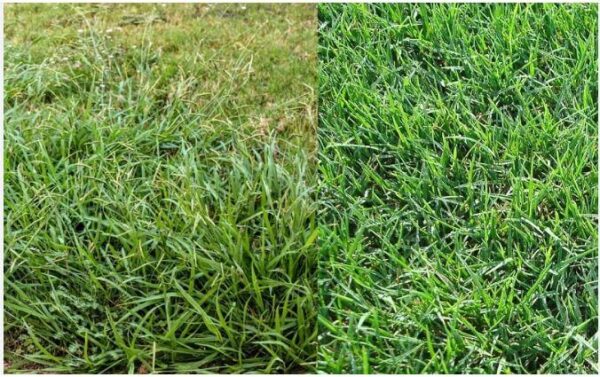The debate about crab grass vs Bermuda grass is interesting because it is like comparing a ground mole and a flea. When it comes to growing a lush lawn, there are several options before you – grass being the main option. However, although they look similar, certain grass varieties are more welcome than others. For instance, though crabgrass and Bermuda grass share several similarities, most landscapers consider crabgrass as a weed and welcome Bermuda grass. To determine which plant is a threat to your property, let’s compare Bermudagrass vs crabgrass.
The key differences between Bermuda grass and crabgrass lie in their appearance, growing conditions, growth habits, landscaping uses, and maintenance requirements.
On the other hand, Bermuda grass vs. crabgrass similarities include faster spreading and are both low-growing warm-season plants. Coincidentally, some people consider both as weeds because of their invasive nature and unsightful looks.
Besides, both crabgrass and Bermuda are highly drought-tolerant.
Crabgrass vs Bermuda Grass: Can You Tell the Difference?

Here are a few notable differences between crabgrass and Bermuda grass:
1. Appearance
Bermuda grass has wide leaf blades with medium texture, and both stems and edges are dark green. It produces shoots below (rhizomes) and above (stolons) the ground surface.
On the other hand, crabgrass has two species; smooth and hairy crabgrass. Both species have bright green leaves, but hairy crabgrass looks less vibrant.
2. Growing conditions
Bermuda grass flourishes in fertile, well-drained soil. However, like other weeds, crabgrass can thrive in any condition, including suboptimal environments like dry soils with low fertility.
3. Maintenance requirements
If you plant Bermuda grass as your decorative lawn, you must consistently water, fertilize, and mow the turf. This helps to keep it greener, healthier, and well-maintained. However, crabgrass thrives with no maintenance.
4. Growth habits
Bermuda grass is a perennial plant that grows yearly and becomes dormant or turns brown in the winter. It can tolerate heavy foot traffic due to its deep root system.
On the other hand, crabgrass dies off in autumn after the first frost and has a shallow root system. However, this weed grows and spreads more aggressively and quickly than Bermuda grass.
5. Landscaping uses
As discussed above, Bermuda is so hardy and endures heavy foot traffic, thus famous for golf courses and athletic fields. Also, some farmers grow Bermuda grass as feed for their livestock. However, landscapers don’t cultivate crabgrass as they classify it as a weed.
Similarities Between Crabgrass and Bermuda Grass

i. Both crabgrass and Bermuda are low-growing plants and spread rapidly to fill bare spots.
ii. These plants thrive in full sun and are highly salt and drought-tolerant.
iii. Most homeowners and gardeners eradicate crabgrass and Bermuda from an aesthetic perspective, as they look unsightly.
iv. Both Bermuda grass and crab grass are invasive. When not controlled, they impede the growth of other plants and quickly spread beyond the yard to flower beds, sidewalks, and driveways.
v. Both plants produce seed heads in early fall or late summer.
Crabgrass vs Bermuda Grass FAQs
Q: What kills crabgrass without killing Bermuda?
A: The best way to eliminate crabgrass in your Bermuda lawn is by applying post-emergent crabgrass killer containing Quinclorac. This selective herbicide kills crabgrass without harming lawn grasses like Bermuda, Fescue, and Zoysia. So, ensure the herbicide you use for Bermuda crabgrass contains Quinclorac.
Q: What herbicide kills crabgrass in Bermuda grass?
A: Apply Imazapic (Impose) on your property to control crabgrass in Bermuda lawn and perennial peanut hayfield. When crabgrass is actively growing, you can treat Bermuda grass with Imazapic at 4 to 8 oz per acre in spring. In perennial peanut fields, avoid applying more than four oz per acre.
Bottom Line
There are various grass varieties available to homeowners and gardeners. However, when looking to renovate your property, you’ll find two most popular options on the internet; Bermuda grass and crabgrass.
Both have various similarities, and you need to know the Bermuda grass vs. crabgrass comparison. This will help you determine which one is a threat to your lawn.
Their differences lie in appearance, growing conditions, growth habits, landscaping uses, and maintenance requirements. On the other hand, they are both low-growing warm-season plants that spread rapidly.
Also, both plants are considered weeds by most landscapers as they are invasive and look unsightly. Besides, both crabgrass and Bermuda are highly drought-tolerant.


